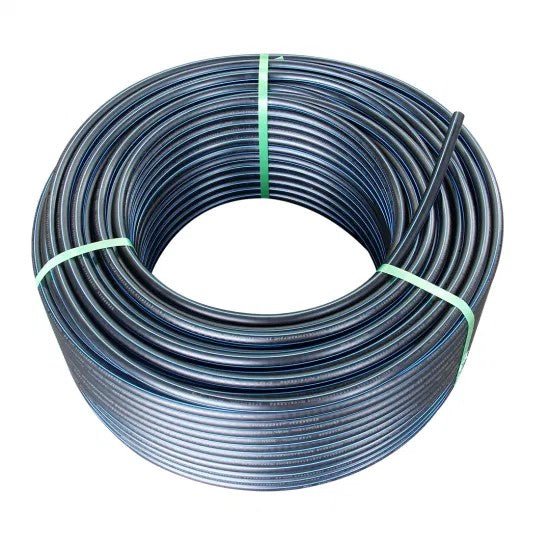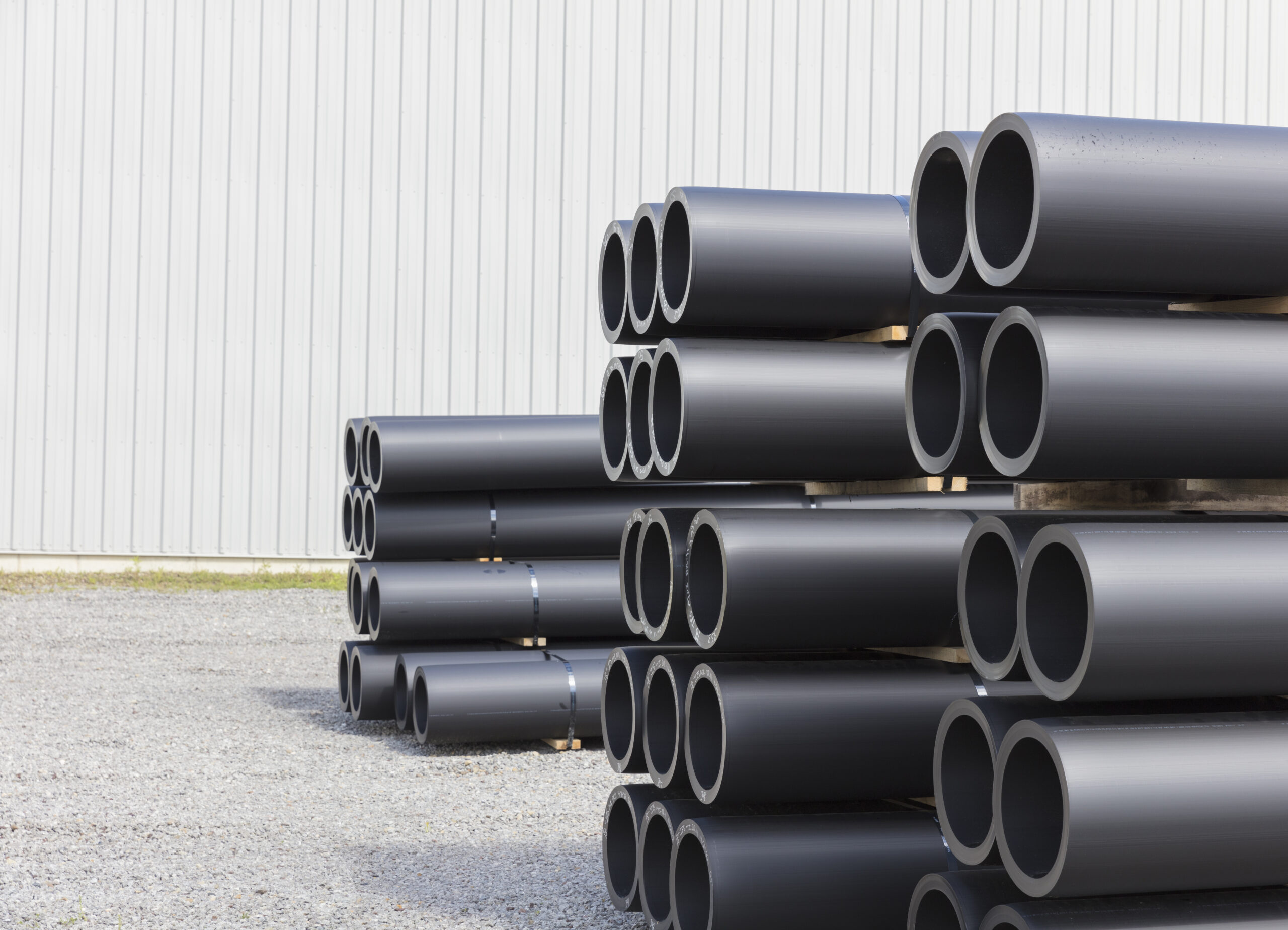The Innovation of American Plastics HDPE Pipe Manufacturing: What You Need to Know
The Vital Actions for Successful Installation of HDPE Pipeline in Your Following Job
Successful installation of HDPE pipeline requires mindful planning and implementation. Key steps consist of examining task needs, preparing the site, and selecting proper signing up with techniques. Each stage plays an important duty in making certain the stability and performance of the pipe. Recognizing these vital steps can significantly affect the general success of the project - American Plastics HDPE Pipe Manufacturing. Nonetheless, the nuances of each step may hold the trick to getting rid of typical difficulties faced during installment
Understanding the Benefits of HDPE Pipe
High-density polyethylene (HDPE) pipe supplies countless advantages that make it a favored choice for various applications. Its high resistance to corrosion and chemicals assurances sturdiness popular environments, significantly prolonging the lifespan of installments. Furthermore, HDPE's adaptability permits much easier installment, particularly in challenging surfaces, as it can bend without breaking. The lightweight nature of HDPE pipe streamlines transport and handling, lowering labor expenses throughout installation.
In addition, HDPE pipe is understood for its reduced friction coefficient, which enhances liquid circulation and lessens power usage. Its seamless building and construction decreases the threat of leaks, contributing to better source administration and environmental management. On top of that, HDPE is recyclable, straightening with lasting methods and reducing ecological effect. Overall, the combination of stamina, flexibility, and eco-friendliness makes HDPE pipeline a premium choice for a wide variety of jobs, from water distribution to commercial applications.
Planning Your HDPE Pipeline Setup
When preparing an installment of HDPE pipe, cautious factor to consider of a number of vital variables is essential to protect an effective project. Job managers have to evaluate the certain requirements of the pipe, consisting of the planned usage, flow rates, and environmental conditions. Understanding these specifications will certainly assist the option of proper pipe dimensions and product quality.
Next off, timelines ought to be established, factoring in procurement routines and any kind of possible hold-ups. Control with regional authorities for licenses and regulatory compliance is also crucial. Furthermore, a comprehensive spending plan ought to be prepared, incorporating all expenses associated with products, labor, and machinery.
Finally, it is essential to engage a certified team experienced in HDPE pipe setup. Their knowledge will certainly aid reduce dangers, warranty adherence to sector standards, and ultimately add to the job's success. Detailed planning lays the groundwork for a smooth installment procedure and resilient performance of the HDPE piping system.
Preparing the Website for Installation
Proper site preparation is vital for the effective installation of HDPE pipe. Before installment begins, the site should be completely examined to ensure it fulfills all needed needs. This consists of evaluating the ground for existing frameworks, utilities, and prospective hazards that could restrain the installment procedure.

Proper elevation and alignment need to be established to maintain a constant slope for drainage functions. Appropriate drainage around the installation website is additionally important to stop water accumulation, which can cause issues down the line.
Methods for Signing Up With HDPE Pipings
Attaining a trustworthy connection between HDPE pipelines is necessary for making certain the integrity and durability of the installation. Numerous methods exist for signing up with these pipelines, each fit for various task requirements. Blend welding is just one of one of the most common techniques, making use of warm to bond the pipeline ends with each other, producing a seamless and sturdy link. This technique can be more categorized right into socket blend and butt combination, depending on the pipe configurations.
Mechanical installations are an additional option, employing clamps and threaded adapters to sign up with areas of HDPE pipeline. While typically faster to install, they may require extra maintenance gradually. Electrofusion is a specialized technique that entails utilizing electrical current to warm and fuse the pipelines with particularly designed installations, ensuring a strong bond. Choosing the ideal joining strategy is critical, as it straight impacts the total performance and reliability of the HDPE piping system in the intended application.
Evaluating and Assessment of Installed Pipeline
The testing and evaluation of mounted HDPE pipelines are critical to ensuring their performance and longevity. This procedure incorporates aesthetic assessment techniques, stress testing approaches, and leak detection treatments to recognize prospective issues. By utilizing these approaches, specialists can confirm the integrity of the installation before it is put right into use.
Aesthetic Inspection Techniques
Utilizing reliable visual evaluation techniques is essential for guaranteeing the stability of installed HDPE pipelines. Assessors should methodically check out all noticeable areas of the pipeline to recognize any indications of damage, misalignment, or incorrect installment. Key indicators to assess consist of joint stability, surface area irregularities, and connections. Inspectors may utilize tools such as amplifying glasses or cams to boost presence and information. It is essential to look for indicators of environmental stress and anxiety, such as bending or too much bending, which can compromise performance. Regular documentation of searchings for enables tracking adjustments over time and helps guide essential fixings. By sticking to well established visual assessment protocols, task teams can significantly decrease the danger of future failings and guarantee lasting reliability of the piping system.
Pressure Evaluating Techniques
Aesthetic assessment acts as a preliminary measure, yet it is not adequate by itself to ensure the efficiency of mounted HDPE pipes. Pressure screening methods are crucial for making sure the integrity of these systems. Usually, hydrostatic testing is utilized, where the pipelines are full of water and based on stress degrees over the intended operating pressure. This approach assists determine weaknesses or prospective leaks. Pneumatically-driven screening can likewise be used, although it lugs higher risks because of the compressibility of air. No matter the technique picked, adhering to sector criteria and safety and security protocols is crucial. After performing stress tests, detailed documentation is required to verify the outcomes and confirm that the installment meets all functional demands prior to proceeding to the next phase of the job.

Leak Detection Treatments
Just how can one assure that set up HDPE pipelines are free from leaks? Reliable leakage detection procedures are important to secure the integrity of the system. At first, aesthetic examinations ought to be done, searching for indications of water buildup or dirt disintegration around pipeline joints. Following this, stress testing can validate the system's strength. A common technique is the hydrostatic examination, where water is presented under pressure, keeping track of for decreases that suggest potential leaks. In addition, advanced modern technologies, such as acoustic sensors or infrared thermography, can detect leakages that may not be noticeable. Routine tracking and maintenance additional add to the long life of HDPE pipes, ensuring they continue to be leak-free throughout their functional life-span. Appropriate paperwork of these procedures is important for conformity and future recommendation.
Maintenance Tips for Long-Term Efficiency
To ensure the longevity of HDPE pipelines, establishing a regular evaluation schedule is vital. This aggressive method permits for the very early discovery of prospective issues, reducing expensive fixings. Additionally, applying proper cleansing techniques will help keep peak performance and stop build-up that can impact capability.
Normal Inspection Schedule
Although HDPE pipes are recognized for their durability and resistance to corrosion, developing a routine evaluation routine is important for ensuring their long-lasting performance. Regular evaluations assist recognize potential concerns such as leakages, joint integrity, and ecological influences that may affect the pipe's capability. It is recommended that evaluations occur at the very least biannually, or a lot more regularly in settings with extreme problems. Texas hdpe pipe manufacturer. Throughout these analyses, visual checks must be conducted to find indications of wear or damages. In addition, making use of modern technology such as ultrasonic testing can supply further understandings right into the pipe's problem. By applying a structured inspection schedule, task managers can proactively resolve issues, therefore prolonging the life expectancy of HDPE pipelines and maintaining system effectiveness
Correct Cleaning Techniques
Proper cleansing strategies play an essential duty in preserving the long-lasting performance of HDPE pipelines. Regular cleaning avoids the buildup of particles, debris, and biofilm, which can bring about blockages and lowered circulation efficiency. Operators should utilize approaches such as high-pressure water jetting or foam cleaning to properly eliminate pollutants without harming the pipeline surface area. It is vital to stay clear of making use of severe chemicals that might deteriorate HDPE product. Additionally, set up maintenance checks need to include visual assessments for any type of indicators of wear or damages. Properly trained personnel need to perform these cleaning processes, making sure conformity with safety and ecological regulations. By applying these methods, the lifespan of HDPE pipelines can be greatly prolonged, guaranteeing perfect efficiency throughout their functional life.
Regularly Asked Questions
What Are the Ecological Impacts of HDPE Pipeline Manufacturing?
The ecological effects of HDPE pipe production include greenhouse gas exhausts, power consumption throughout manufacturing, potential plastic pollution, and difficulties in recycling. Nevertheless, HDPE's longevity and resistance to corrosion can alleviate some environmental problems.
Just How Does HDPE Pipe Compare to Various Other Materials?

What Devices Are Necessary for HDPE Pipe Installation?
Crucial cpvc pipe fittings devices for HDPE pipe installment include a combination maker, pipeline cutters, shovels, gauging tape, and security equipment. Appropriate devices assurances efficient, safe handling and installation, adding to the project's general success and integrity.
Exist Any Type Of Particular Rules for HDPE Pipe Installation?
Details guidelines for HDPE pipe setup vary by region, frequently governed by regional, state, or federal codes. Conformity with these laws warranties safety and security, environmental management, and performance, making adherence important for effective project results.
Can HDPE Pipes Be Recycled After Use?
Yes, HDPE pipes can be recycled after use. Their thermoplastic nature enables for reprocessing, making them appropriate for reusing right into new products. This sustainability element adds to ecological preservation and advertises circular economic situation techniques in building.